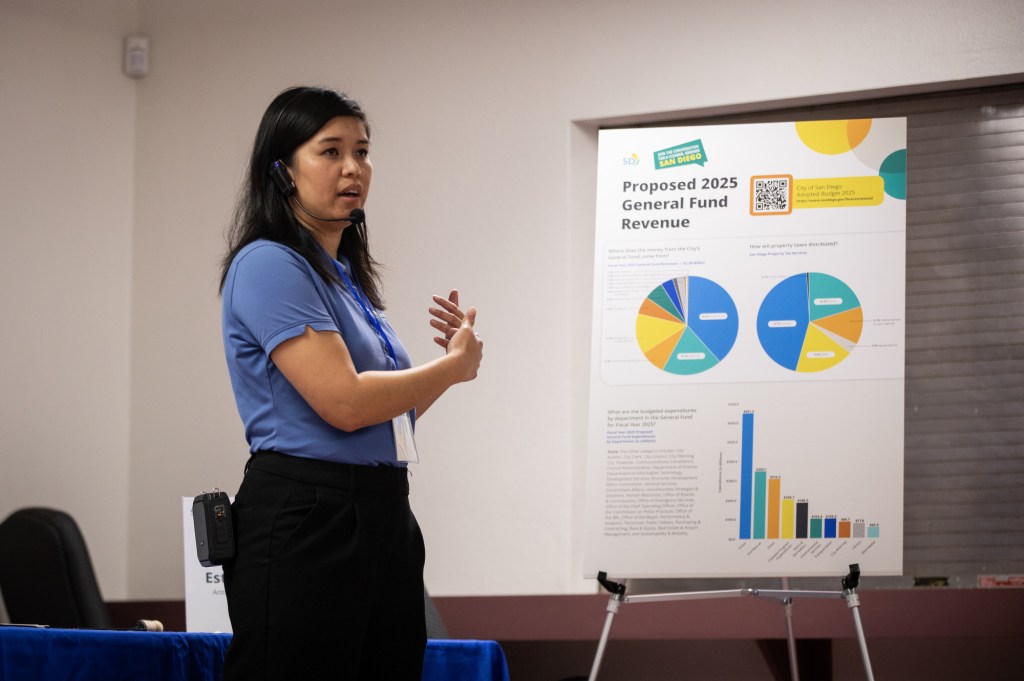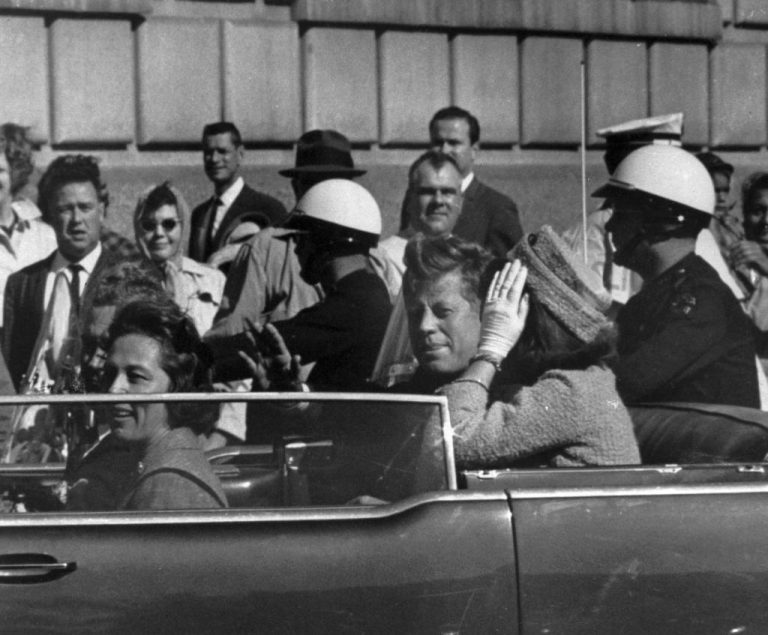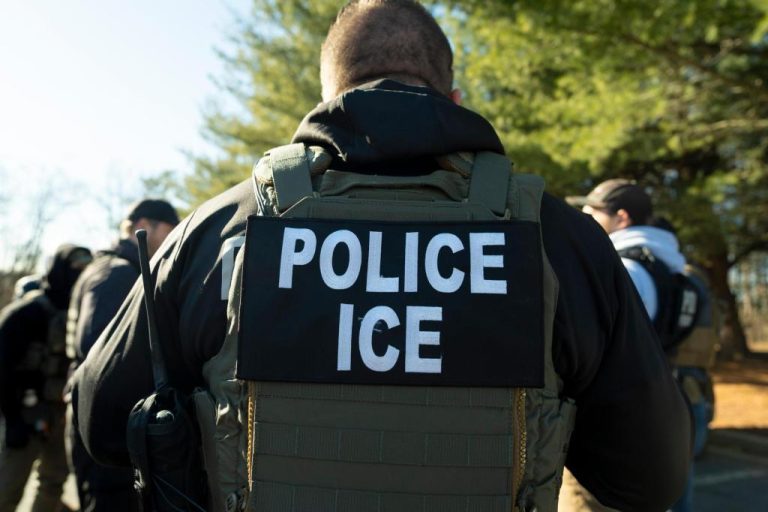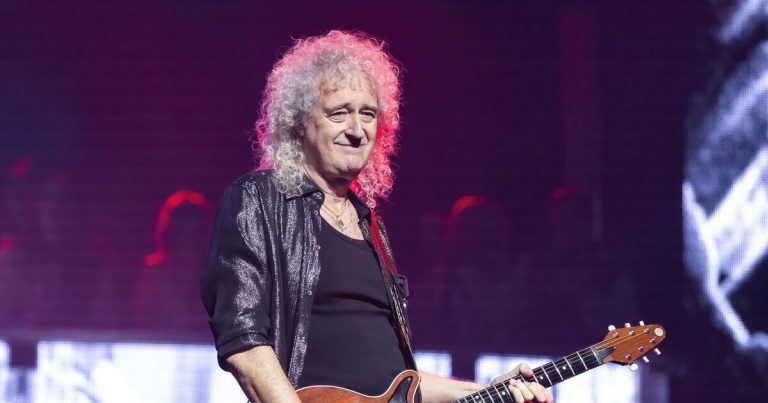

San Diego officials are busy working out details of how they’ll begin charging nearly 300,000 city households for trash pickup next summer, and they have recently decided to add the trash fees onto twice-a-year property tax bills.
Other crucial decisions will come soon on how much to charge, whether to subsidize low-income households and whether households can select a lower level of service in order to pay lower fees.
City Council members said last week they would like to provide subsidies, but no details have emerged on how that would work or who would be eligible.
City trash officials said they’re still exploring whether to charge all households a flat fee or to have tiered rates based on whether households want bulky trash pickup and large or small bins.
They are also analyzing a consultant’s study suggesting the city needs to dramatically revamp its trash and recycling services by hiring more people, adding new technology, buying more trucks and boosting worker training.
The big changes are coming because city voters in 2022 approved Measure B, which amended a 1919 law called the People’s Ordinance that had prohibited the city from charging for trash pickup at many households.
Measure B allows the city to start charging single-family homeowners and other households that now receive no-fee trash pickup — essentially apartment or condo complexes with four or fewer units that meet city requirements for trash truck access.
All other apartment and condo complexes in the city — and all businesses — will continue to be ineligible for city trash and recycling services, which already forces them to pay private haulers.
City officials postponed collecting fees for trash pickup by nearly three years so they can ask affected residents what services they want, determine how much to charge and make several related decisions.
City officials and a consultant the city is paying more than $3 million recently completed the first phase of that process and updated the City Council’s Environment Committee on their progress last week.
They announced the key decision to collect trash fees along with property taxes to avoid creating a large and expensive city billing bureaucracy. The decision was based partly on notorious billing problems in the city’s water and sewer divisions.
Committee members praised the decision but expressed concerns that landlords renting properties could use it as an opportunity to overcharge tenants who won’t get to see the actual trash bill.
“I would hate to see a situation where the fee to a property owner is $75 and they just call it an even $100,” Council President Sean Elo-Rivera said.
The decision to include trash fees in property tax bills comes with a lot of advantages, said Kirby Brady, interim director of the city’s Environmental Services Department.
It shrinks the portion of trash bills that will go to administrative costs, it allows the city to avoid creating a new bureaucratic layer, and it allows residents to avoid creating and managing a new account.
“We feel confident this is a solution that’s going to be very convenient and very familiar to customers,” Brady told the committee.
She said costs to the city will be minimal — 10 cents per household per bill — and that the city will also be highly likely to get its money, because defaults on property tax bills are typically about 2%.
If the city instead chose separate billing, city officials would have to handle delinquencies and shifts in which customer is at which address when renters move in or out of a property, Brady said.
She said including trash bills in property tax payments has already been successful in San Jose, Berkeley, Palm Desert, Rialto and Yucaipa.
The city’s independent budget analyst said one concern is whether the City Council will finalize trash fees next year in time for property tax bills that get sent out in advance of a Nov. 1 payment deadline.
A proposed fee structure is scheduled to be unveiled in February and presented to the Environment Committee. A final version is scheduled for approval by the full council in early June.
The city expects to save roughly $80 million a year it now spends on trash pickup, so it’s important to the city budget to begin collecting fees quickly.
Brady said another billing complication could be the possibility of charging different customers different amounts based on the level of service they receive.
She said the goal is to provide such a setup, which she called an “à la carte” approach, where customers can choose the individual services that matter most to them.
That could include bulk trash pickup, more frequent recycling pickup and larger or smaller trash and recycling bins.
Different bin sizes would be needed for the city to create a “pay-as-you-throw” program that would mean lower bills for people who produce less trash and higher bills for those who produce more trash.
Such a program was a key motive for beginning to charge customers for trash service. City officials say a pay-as-you-throw program is needed to help achieve San Diego’s goal of net-zero waste by 2035.
Councilmember Joe LaCava said he understands the complications Brady is facing.
“I know we generally like to go with flat fees — it’s easier to administer and easier for folks to understand,” he said. “À la carte opens up another door.”
The independent budget analyst said two years ago that a rough estimate of monthly bills would fall between $23 and $29 if all the 285,000 households that had been getting no-fee service were charged equally.
But bills will almost certainly be higher because of inflation since then, and because the IBA’s analysis didn’t account for increased service levels recommended by the city’s consultant, HDR Engineering.
HDR says the city needs to create several additional staff positions and invest in new data systems to track performance and safety. It recommends truck cameras and radio-frequency identification readers.
The consultant also says the city should increase the number of trucks available daily to align with industry standards, and create a more rapid truck replacement schedule to ensure vehicles run efficiently.
HDR also says the city should expand existing training facilities at the Miramar landfill, prioritize in-person training, improve tracking systems and update fueling procedures.
An additional recommendation is boosting truck maintenance, including new pressure washers, an expanded parts storeroom and an expanded welding and fabrication shop.
HDR also suggests expanding and moving a fluids and compressor room, adding lubrication stations, repairing service bays and vehicle lifts, and hiring more fleet technicians and welders.
These changes will require substantial initial costs and ongoing costs that would be passed on to city trash customers, but no estimates have been disclosed.
Elo-Rivera said city residents need to understand that San Diego has operated its trash division on a lean budget, partly because it couldn’t charge the people receiving the service.
“Now we have an opportunity to provide folks with world-class public services, which is our goal,” he said. “Operational efficiency can mean a lot of things. A lot of times in this city, it’s meant ‘lowest cost possible.’”
Under state law, San Diego can’t charge residents more than what it costs the city to deliver the service.
During the first phase of public outreach, city officials say they heard from more than 6,000 residents who completed surveys or attended forums or other events.
The second phase of public outreach is just beginning, including a forum from 4 p.m. to 5:30 p.m. Wednesday at the downtown library, 330 Park Blvd.
Forums are scheduled through Dec. 10. Visit cleangreensd.org for more information.




